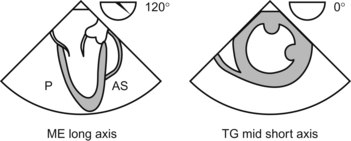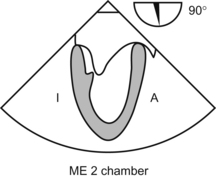Chapter 21 The Structured TEE Examination John C. Sciarra When you do a TEE exam you gather information for yourself. So the order in which it is done is your preference. But, if someone comes after and wants to look at your exam, it can be difficult to sort out all the information. That is why this chapter seeks to suggest a standard and logical way to perform your exam. In addition, if you do it the same way each time you will get more efficient. Plus the order suggested here just makes sense. It is broken down into three sections. First is ventricular function, second are the valves, and third are associated structures. This way you can confidently blast through a comprehensive examination and be confident you did not overlook a major item. Left Ventricle The first view is the ME 4 chamber where both atria and ventricles are seen with the two AV valves. The lateral and the septal walls of the left ventricle and the free wall of the right ventricle are seen. The next view is the transgastric short axis (TG SAX) obtained by advancing the probe further down to enter the stomach and anteflex. Cross section of the LV/RV (doughnut appearance) is seen at the level of the papillary muscles. This is the most commonly used view to assess the systolic function of the LV as it displays all the six regions corresponding to the distribution of the 3 coronary arteries. At this point record a loop of this view to compare with the post-operative study. The TG 2 chamber is seen by increasing the angle to 90 degrees.
(or guidelines for a comprehensive evaluation)
 Confirm that there is no absolute contraindication for TEE insertion.
Confirm that there is no absolute contraindication for TEE insertion.
 Treat the probe gently (expensive), always use a bite block.
Treat the probe gently (expensive), always use a bite block.
 Enter patient details—name, MRN, DOB in the machine using the ‘Patient I.D’ button.
Enter patient details—name, MRN, DOB in the machine using the ‘Patient I.D’ button.
Ventricular Function


![]()
Stay updated, free articles. Join our Telegram channel

Full access? Get Clinical Tree


The Structured TEE Examination

